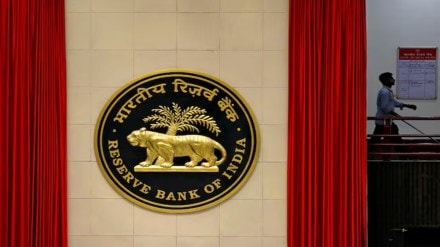By Ajay Shankar, Distinguished Fellow, Institute for Studies in Industrial Development
The real exchange rate does not usually feature in discussions on the economy. The Reserve Bank of India’s (RBI) decisions on the interest rate are eagerly awaited. The goods and services tax rates have been revamped, a Diwali gift to the consumer. President Trump brought import duty rates to the centre stage and demanded that India lower them. The fiscal deficit is always a matter of concern.
But the exchange rate is rarely talked about. It has been falling, and the decline makes headlines. Those opposed to the government cite it as a failure with the widespread view in the political class that a strong currency is a sign of the economy being strong and a depreciating currency indicates a weakening economy. The term “real exchange rate” is not often used. Excluding economists, it is not understood by most.
The real exchange rate is the nominal exchange rate between two currencies adjusted to reflect the difference in the inflation rates in the two countries. Let us assume that the exchange rate was `100 for a pound sterling in 2024 and remains so in 2025. The inflation rate in India in 2024 was, say, 6% and 2% in the UK. The difference in the inflation rates was 4%, which makes what is produced in India 4% more expensive. Imports become relatively cheaper and exports more expensive by 4%. The real exchange rate of the rupee vis-à-vis the pound has appreciated by 4%. This appreciation has the same effect as a 4% reduction in import duties across the board. Clearly, movements in the real exchange rate have an enormous impact on the economy and its performance. This needs far more attention.
The successful East Asian economies understood the power of the exchange rate and chose to artificially keep it depreciated to give domestic manufacturing and value addition a greater boost. This aided their remarkable export-led growth. Their central banks kept buying dollars and building up reserves to keep depreciating their currency.
A few years after the reforms of 1991, the RBI adopted a policy of having a market-determined exchange. This had become the international practice by then with the end of the era of fixed exchange rates after the second World War. Normally, the real exchange rate appreciates over time with increase in productivity and exports. India has been sui generis in experiencing real exchange rate appreciation in the absence of these due to two special factors. The first, steadily increasing remittances from overseas Indians—from $2 billion in 1990 to $12 billion in 2000, and $135 billion in 2024.
Secondly, the inflow of money from institutional investors for gains in our stock market, distinct from inflows for actual physical investments. The result has been a steady market exchange rate for some years, while the real exchange rate appreciated as our inflation rates are higher than our major trading partners. Then there are episodes of sharp depreciation of the market rate precipitated by foreign institutional investors choosing to exit the Indian market. This usually happens when they begin to see the real rate appreciation as unsustainable and choose to exit to maximise their gains before the rupee falls.
According to the international agency CEIC, India’ real exchange rate in 2024 was about 18% higher than that of 2005. According to the RBI, it has appreciated over 8% since 2015. This has effectively made most of our formal import duties negative. This is not understood in the public domain. Trump has been calling us “tariff king”. But the effect of this real exchange rate appreciation, to use a motoring metaphor, is like driving the economy with the hand brakes on. No wonder our industrial performance has been so disappointing. That we still have positive, albeit modest, industrial growth is a reflection of the strengths of our entrepreneurs.
Not letting the real exchange rate appreciate is an essential prerequisite for achieving our full potential of increasing manufacturing and domestic value addition. (This is not a sufficient condition. Competitiveness has to keep improving.) The government and the RBI have to decide that the appreciation of the real exchange rate would be prevented by the RBI buying dollars. There can be no objection to this. Artificial depreciation, as the East Asians did, is not suggested. The RBI’s interventions would be modest and imperceptible. An RBI announcement that henceforth it would maintain a stable real exchange rate would send the market signal for greater domestic value addition and job creation. This is a powerful, non-distortionary policy instrument. It is preferable to increasing import duties to protect some sector or imposing anti-dumping duty to protect some firm.
The rupee has been falling in recent months and is now over 89 against a dollar. The government and the RBI could clearly communicate that the rupee is still overvalued and that this depreciation is a positive development. For the future, preventing real exchange appreciation would be the policy. Expectations play a key role in shaping market outcomes. The expectation, based on the experience of the last few decades, has been of real exchange rate appreciation. A new expectation, that this will not be allowed to happen, must be created for positive outcomes to materialise.
Who would be the winners and losers? Those who add value and create jobs would gain, and also those who get jobs. Domestic value addition would increase in the supply chains for the domestic as well as export markets. The losers would be the rich, as their holidays abroad, children’s education overseas, and consumption of imported luxury goods would become more expensive in real terms. Corporates with foreign currency debt would lose as there is a lower real repayment cost with an appreciated currency.
The choice clearly has to favour job creation.
